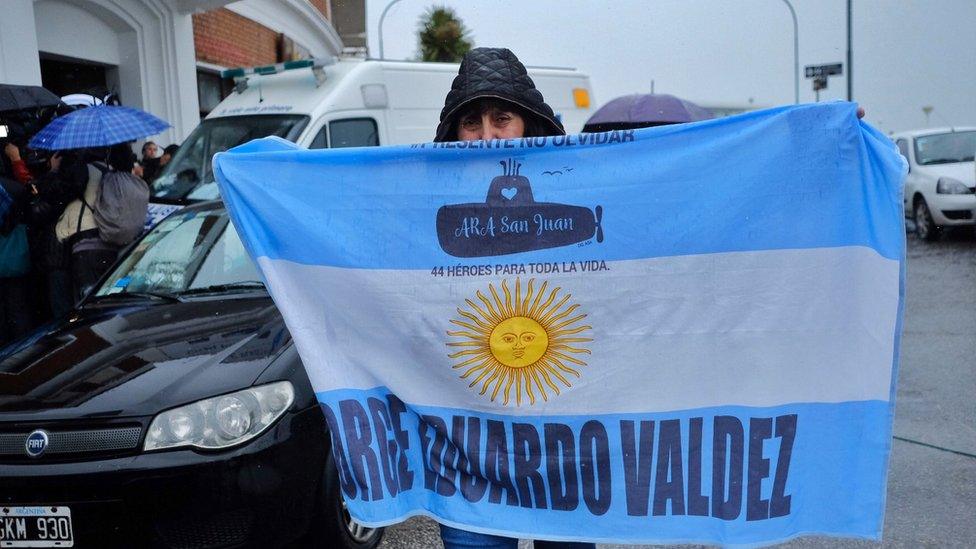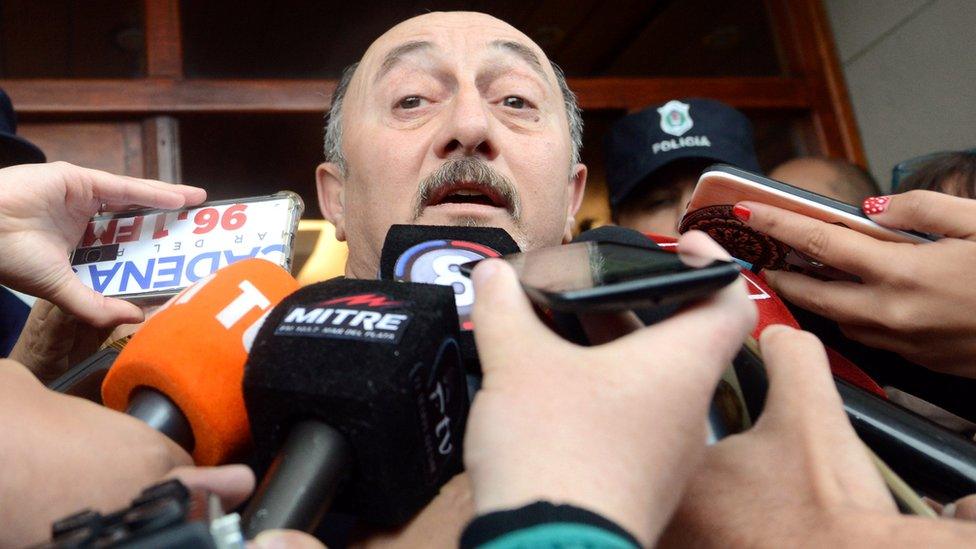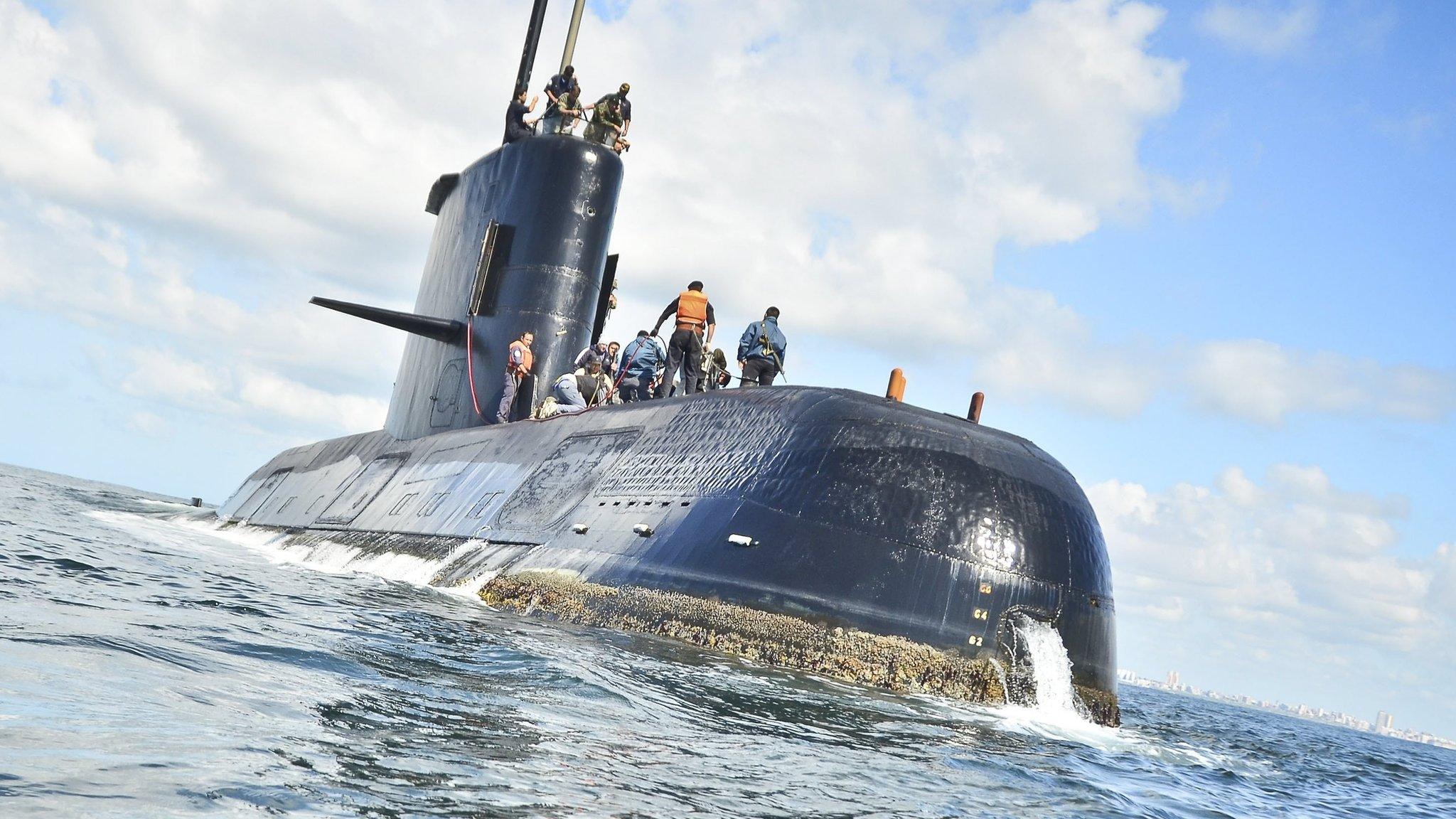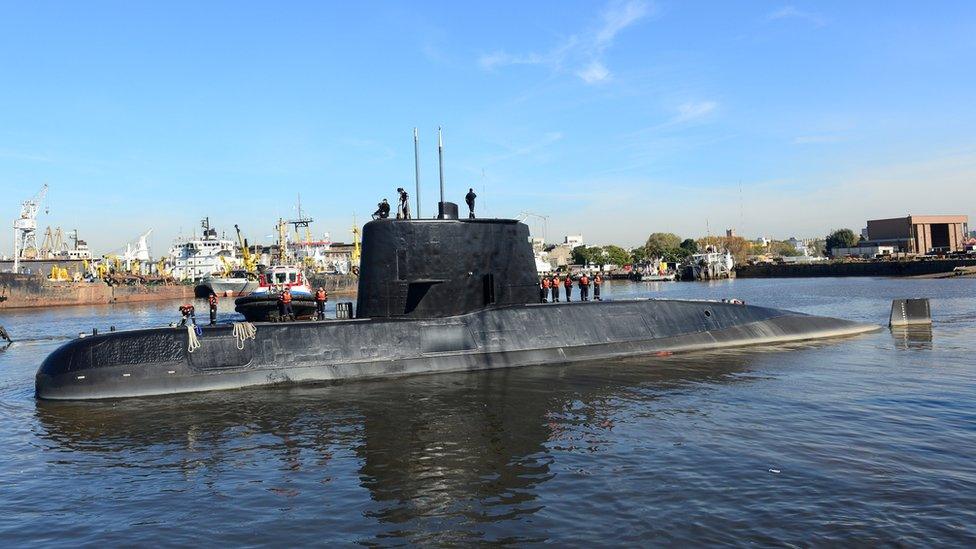Argentine submarine: Government 'lacks means' to raise lost vessel
- Published

Families of the crew have gathered at the Mar del Plata naval base to hear the latest details
Argentina's defence minister has said it "does not have the means" to raise a missing submarine which disappeared with 44 crew on board, after its wreck was found beneath the Atlantic.
The ARA San Juan went missing 430km (270 miles) off the Argentine coast on 15 November 2017, and was located a year and a day later.
Officials said the vessel was lying 900m (2,950ft) below the surface.
Relatives of the crew are demanding that the government raise the wreck.
Navy commander Gabriel Attis has confirmed that the submarine imploded. He said the hull was "totally deformed, collapsed" and that debris was scattered over an area of about 70m (229ft).
The wreck was found by US search firm Ocean Infinity, a private American company which can map the seabed. Argentina had engaged its services after an international operation failed to locate the doomed vessel.
The company, which uses underwater rovers, previously tried and failed to find the wreckage of the lost Malaysian Airlines MH370 plane.
How have victims' families reacted?
Yolanda Mendiola, the mother of missing sailor Leandro Cisneros, 28, said families of the crew had been brought together by the navy to learn the latest details.
"We are with the other relatives. They are going to show us the photos. They say that our youngsters are inside," she said.
"We are all destroyed here."
Ms Mendiola called on the government to recover the wreck, saying: "If we don't see it, we can't have closure. Therefore we're going to demand that the president (of Argentina) finds a way to get (them) out, because it's possible, the company said so."

Gabriel Attis, chief of the Mar del Plata naval base, said much of the sub's hull is intact
The discovery came a day after relatives had gathered at a sombre ceremony to remember their loved ones. President Mauricio Macri attended and promised to keep up the search for the submarine.
An anonymous naval officer told the AFP news agency that the vessel could be lifted - at a cost: "Raising the submarine to the surface is not impossible, but it is a very complex operation, and therefore very expensive," the officer said.
It remains unclear what caused the sub to implode, and the victims' families want an independent investigation.
"We have found them," Jorge Villarreal, the father of one crew member, told local radio. "Now we are going to search for the truth. For us this is the start of a new chapter."
What happened to the sub?
The ARA San Juan was returning from a routine mission to Ushuaia, near the southern tip of South America, when it reported an "electrical breakdown".
According to naval commander Gabriel Galeazzi, the submarine surfaced and reported what was described as a "short circuit" in the vessel's batteries.


The sub was ordered to cut its mission short and return to the naval base in Mar del Plata immediately.
The Argentine navy's last contact with the vessel was at approximately 07:30 (10:30 GMT) on 15 November, at which point its captain reportedly confirmed that the crew were well.
Eight days after the sub vanished, the CTBTO - which operates a network of listening posts to monitor nuclear explosions - said that there had been a "hydro-acoustic anomaly" about 30 nautical miles (60km) north of the sub's last-known position at 10:31 (13:31 GMT).
Last year, navy spokesman Enrique Balbi told reporters that water had entered the submarine's snorkel, which can be used to take in air from above the surface when the submarine is submerged.
The saltwater dripped onto a battery tray in the prow, causing the battery to short circuit and to smoulder, he said. The sub had reported the fault and had been ordered back to base, but then disappeared.
Argentine authorities later launched a criminal investigation into the disappearance.

- Published24 November 2017

- Published30 January 2018

- Published1 December 2017

- Published28 November 2017

- Published23 November 2017

- Published23 November 2017
